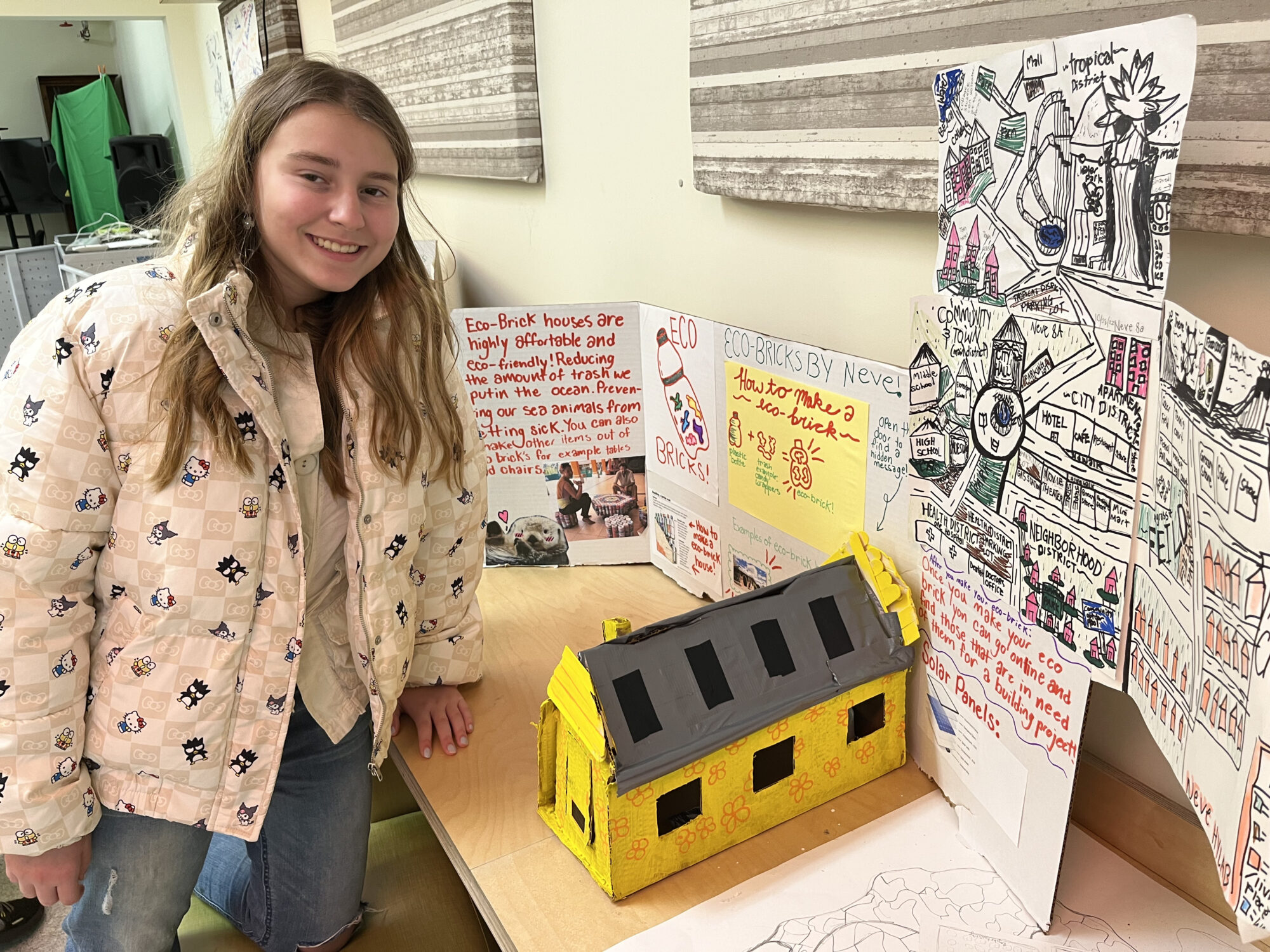Hyla Stories
What If: The Future Cities Expo

Last week 8th graders invited us to glimpse the future and tour their invented cities designed entirely for the health of their inhabitants and the earth. Having imagined possibilities, designed blueprints, and built prototypes, students created presentations to showcase the scientific features of their invented future cities. Teachers and students from other grades toured the expo to learn about the problems and solutions on display.
Throughout this interdisciplinary unit, students answer a series of questions that integrate biology, urban design, and physics. The first question asks students, “what would our cities look like if human health and well-being were at the center of all decisions about how we live together?” To answer, students begin with a focus on clean water and air and then move into the study of disease, germs, and viruses. Next Jeff asks students to consider “how do I keep my friends from getting sick?” By design, this question is meant to hit home. “We know learning has to be personal,” said Jeff, “and once students can see why something matters at a personal level, they can balloon their thinking to include more people and more strategies.” Next, students move through a series of labs and surveys to collect data at school, fully knowing humans are surrounded by bacteria and viruses every day. “By taking swabs right here at school, students can focus their attention on a local environment to think strategically about the choices we have right here to keep each other healthy.” With their findings, students then developed a health campaign for Hyla with daily actions they can take to keep each other healthy.
From this local perspective, students then began to scale their thinking to larger models – like water and air filtration – that can benefit more and more people. As they began to imagine possibilities for the future, the focus turned to energy as students asked, “how will humans solve the problem of having enough energy for people to thrive?” This question launched students into the physics of energy, allowing them to develop a scientific foundation for the energy solutions they next incorporated into their cities.
In addition to energy generation, the future cities designed by students offer a range of solutions to improve human health such as recycling processes, food systems, transportation, and ecological restoration. “This particular class spent a lot of time focusing on how to integrate human systems into the natural landscape, so they really envisioned how their cities would look, with plants and trees,” said Jeff. “They were tuned in to the fact that we already have so much technology and innovation, but we have to use it in a way that allows humans to move around and connect in ways that are safest for them and the planet.”
As a showcase of human possibility, each prototype reflects optimism for the future. Alongside biology, physics, and engineering, a goal of this unit is for students to develop a belief in their own capacity to change the lives of others and make a difference. In Jeff’s words: “I want students to know that there is absolutely no reason why they can’t change the world.”

